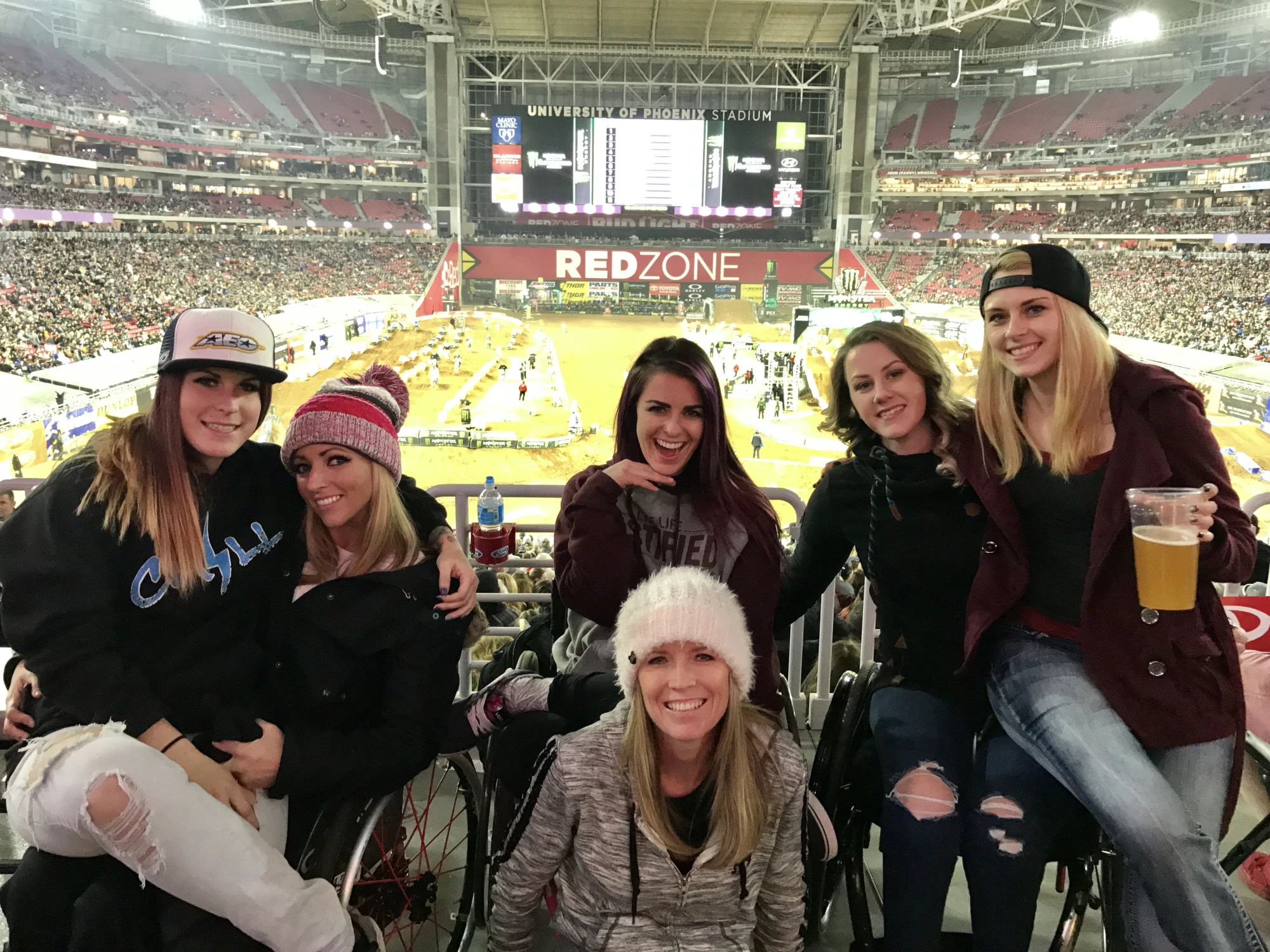
Public funding of sports arenas is not a cut and dried, yes or no question. Numerous factors contribute to either answer to this question. I conducted a poll of my Instagram followers, and some of their viewpoints were quite interesting. Some of their perspectives are quite interesting, leaving the answer to this cloudy question no clearer from different American citizens’ views. Some argued that new stadiums benefit local economies, while others stated our local law enforcement, public education, and public services’ need for more funding. Unknown to me, according to Joel Potter’s research, 50% of new stadium construction is funded by the general public, totaling over $15 billion in taxpayers’ dollars in a twenty-two-year span. (Potter)
There are benefits in the form of a ripple effect of sports arenas on the local economy. Surrounding hotels, shops, restaurants, etc., benefit immensely from the increased traffic through the city. The individual sports arena brings additional tax revenue to the city and state and a significant employment influx. An accurate depiction of this will be to track the economic impact the Raider’s move to Las Vegas had on the City that never sleeps. Tom Sadler says the keyword is “potential” economic impact. He argues that Las Vegas will be competing with Los Angeles and Phoenix for contracts due to the location. (Popke) Due to COVID-19, the team’s first-year revenue may not be an accurate representation of the new sports arena’s actual economic impact on the local economy.
Another positive of sports arenas moving into cities is the humanitarian work the players and local businesses provide in the community. We see this first hand in Charlotte with the Carolina Panthers. Greg Olsen regularly visits Levine Children’s Hospital. While Cam Newton played for the Panthers, he hosted “Christmas with Cam” at Levine’s Children's Hospital. (Atrium Health) Local businesses such as Nevada’s “Move 4 Less” donates to charity for every Raider win. (Move4less)The humanitarian benefits of a local sports team are irreplaceable.
It seems that the individuals who responded to my Instagram poll don’t realize that the government already provides support to the construction of sports arenas via stadium subsidies. Is this something that most of America doesn’t recognize? One of the biggest arguments and my initial opinion was, what about those who don’t watch sports? Due to facilities being called “sports arenas,” it implies that they are only used for sports when this is inaccurate. I have visited Spectrum Stadium (home of the Charlotte Hornets basketball team) for both a basketball game and a concert. I once volunteered my services at a free dental clinic for the local community at Atrium Health Stadium (home of the Carolina Panthers). These facilities offer support for events other than sports, giving less validation to the “I am not a sports fan” argument.”
I have a personal issue with tax dollars going to sports stadium subsidies because that money could go back to public education or health and human services. Many schools in populated cities face overcrowded classrooms, inadequate facilities, and little access to technology. Covid is not assisting educators in making resource demands. (Jones) Funding is regularly cut from health and human services. I had experienced the result of budget cuts when my lift in my home broke. Previously Independent Living for People With Disabilities would cover the maintenance of the equipment needed to live your life. Upon contacting my local office, they informed me the funding is no longer available to assist with the maintenance of the lift. When my wheelchair-lift goes out, I’m stuck in the basement, or I have to climb the stairs until I have the money to fix the issue. How many people are trapped in their homes due to no funding for their accessibility needs?
The economic impact of a new sports stadium is not always positive. There is an extensive argument of the inequality a new stadium may cause. (Potter) With rising property values and the cost of living, it forces lower-income individuals out. As the populations of cities increase, typically, so does the gentrification of neighborhoods. With gentrification, as we see poverty forced out of an area, you can expect inequality. According to Potter, “Large and growing peer-review economic literature of the economic impact of stadium arenas, sports franchise, and sports mega-events has consistently found no substantial evidence of increased jobs, income, or tax revenue.” (Potter) One of the reasons for these findings is the average total cost of living in that area is still more significant than the average total revenue from the arena due to the overall increase in the cost of living. I do not believe the stadium to be the leading cause of this, but a factor in the larger picture of widespread gentrification in an area.
As someone who is not a sports enthusiast but enjoys live sports and is an avid concert-goer, I am on the fence with this subject. Potter estimates that $15 billion in stadium subsidies paid by tax dollars contributing to the construction of these arenas has been distributed over 22 years. That breaks down to over 681 million dollars a year spent on sports arenas. When looking at the breakdown of the numbers, I am frustrated. The number of tax dollars contributed to stadium subsidies should create lower ticket prices or cut the amount of taxes contributed to the construction of sports arenas. An excuse we often hear for lack of accessibility, education, or lack of general public goods is inadequate funding. We should make team owners, the players, and the team themselves responsible for constructing their arena, but due to the various uses of the venue, public funding makes sense. I would argue that the number of subsidies these facilities receive to build specific sports venues should be reduced significantly, especially in local economies where individuals in the lower-income bracket go deep into poverty due to gentrification.
Sources
Atrium Health. (n.d.). Cam Newton Gives Levine Children's Patients a Christmas to Remember. Retrieved December 11, 2020, from atriumhealth.org/dailydose/2019/12/16/cam-newton-gives-levine-childrens-patients-a-christmas-to-remember
Jones, S , July 27). Did America Set Public Schools Up to Fail? Retrieved December 12, 2020, from nymag.com/intelligencer/2020/07/the-triple-crisis-facing-americas-public-schools.html
Popke, M , April 19). A Sure Bet: The Economic Impact of Oakland Raiders' Move to Vegas. Retrieved December 10, 2020, from www.sportsdestinations.com/destinations/nevada/sure-bet-economic-impact-oakland-raiders%E2%80%99-move-veg-12717
Potter, Joel M. ""Publicly Subsidized Sports Events and Stadiums: Have Economists done Justice to the Impact on Inequality?"" Managerial Finance, vol. 42, no. 9, 2016, pp ProQuest, ezproxy.cpcc.edu/login?url=https://www-proquest-com.ezproxy.cpcc.edu/scholarly-journals/publicly-subsidized-sports-events-stadiums/docview/1823185880/se-2?accountid=10008, doi:dx.doi.org.ezproxy.cpcc.edu/10.1108/MF-03-2016-0075.

